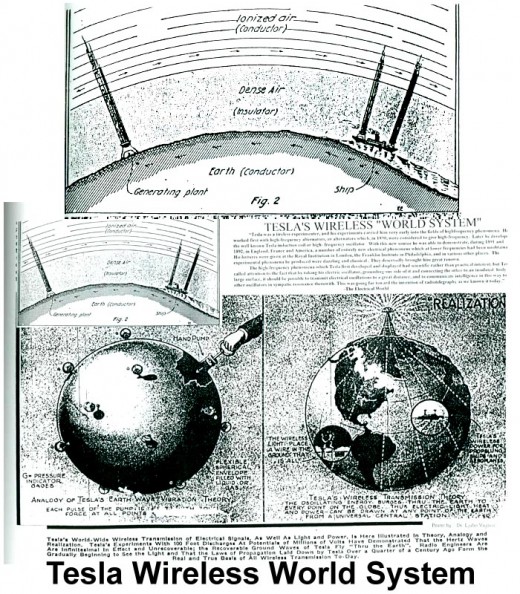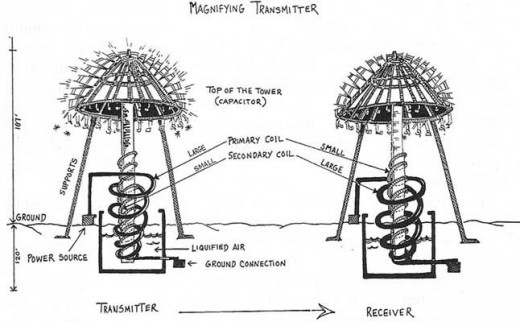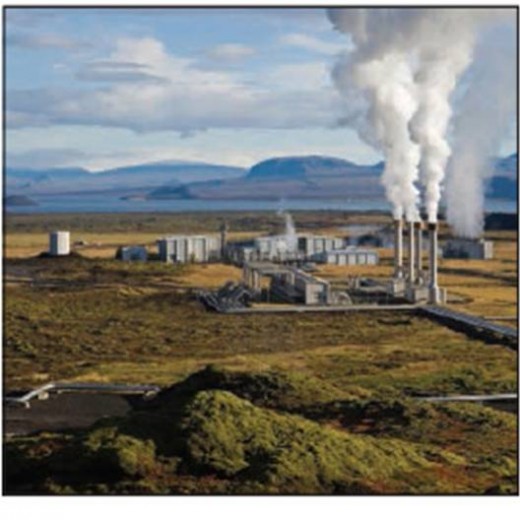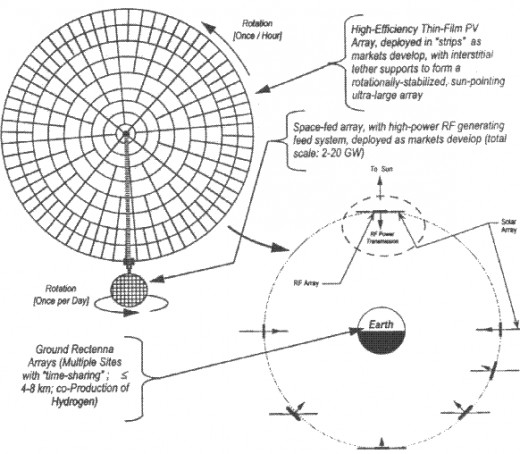Alternative Fuels to Consider Over Fossil Fuels
Many ways exist to create energy that we need




We are not stuck with fossil fuels; there are alternatives.
Alternative fuels as we see them are nothing new under the sun, having been used as far back in history as the 19th century. Some alternative even go back before the dawn of recorded history. Not even ethanol is new. "Corn squeezins" were used to run early cars that could use alcohol as fuel. There was even a steam powered car and compressed air was even considered. Proponents as influential as Nikola Tesla have developed the concept of alternative fuels though his was by way of wireless electrical power transmission. Tesla went one step further than most insofar as that he was able to demonstrate the powering of various technologies using remote fuels sources, where the fuel was not even on board mobile technology like ships, planes, trains, trucks and cars.
Nikola Tesla's concepts and patents of wireless transmission or energy allows for the use of cell phones today and his development of alternating current allowed for the modern profile of cities that we see, with sky scrapers reaching almost 1,000 meters into the sky. The planned tower to replace the ones downed in 9-11 of 2001 in New York, is to be 1,776 meters tall, commemorating in meters the year of the American Revolution. If it were not for alternating current, we would be stuck with the Edison direct current which can only be transmitted over short distances, limiting building heights to no more than five or six stories. The four most influential electrical power people of the 19th and 20th centuries were Edison, Tesla, Westinghouse and Morgan. Tesla was by far the greatest idea man, inventing and demonstrating the wireless transmission of large amounts or useable power as an alternative energy source. He is credited with over 700 patents. The patented Wardenclyff project in New York was the first in what was to be a series of transmission towers to project power to anything with appropriate receiving circuitry to convert the power into a useable form. This could be a household, a city, a ship, train, truck, air-plane or automobile. When J. P. Morgan realized what such a concept would mean as far as charging for wired power is concerned, he dropped his support and ordered the tower he sponsored financially to be torn down. Tesla ended up in dire poverty in his final years, ostracized and demonized in the community. Yet, as far as alternative fuels are concerned, few could top Nikola Tesla's contributions. That we do not use it today is more of a testament to greed past and present than of ignorance.
The industrial revolution was built on steam long before the internal combustion engine existed in the numbers they exist today. The unfortunate thing about steam though is that it was often generated using coal, wood or oil. However, steam can be generated using solar or geothermal sources. In fact some natural steam, such as in Iceland is entirely geothermal in origin. Iceland boasts a 40 percent dependency on geothermal energy, greater than any other country on the planet. On the other hand, Canada and the US, despite having vast reserves for geothermal energy, hardly exploit it at all, preferring to use fossil fuels, ethanol or nuclear sources. It would not be a great leap to tap into geothermal energy to run turbines to at least power and heat our cities. Great reserves of natural heat exists in the Rockies, Cascades and in Yellowstone Park.
Solar energy was used for thousands of years by the First Nations and other so called primitive peoples to dry and preserve food and make salt, long before there was even any concept of refrigeration outside of a winter freeze. Solar energy can be captured to generate electricity efficiently for small electrical appliances like cell phones, MP3 players, portable game consoles, rechargeable flashlights and lighting. In some instances it is already being done, but it is far from universal. Solar energy can be collected to generate steam and this has been demonstrated experimentally and practically. Solar cells today are very efficient and many can be rolled up and carried in a back-pack to be unrolled and used where power collection and generation is needed. We can still dry and preserve food by the solar method, just as countless generations did before us.
Parabolic solar reflectors can be used for cooking when there is plenty of bright sunshine available. It can even be done in winter in a sun facing window. There is absolutely no impact on the environment except for the tasty aroma of cooking food in the cooker as it is being prepared. Solar cookers can be home made or can be bought through various outlets on the internet or in camping supply stores.
Wind energy alone cleared the lowlands of the Netherlands long before the advent of the electric motor and the internal combustion engine. The dutch who saw their land being inundated by slowly rising sea levels, took a proactive approach and built a massive dyke system around most of their fertile growing areas. To keep seeping water out of their farmlands, they harnessed the wind to clear the land of excess water and pumped it out to the ocean. The Dutch even extended their land holding seaward by the same method, reclaiming land that was once under water. They have been doing this for hundreds of years, proving the efficacy of such a system, to conduct a massive virtually country wide engineering project. Even when great sea storms breached the dykes and historically flooded the land, they rebuilt and cleared the land once more with wind power alone. Sadly, many of these windmills have been retired for more compact electrical pumps hooked into an electrical grid powered by fossil fuel or nuclear power plants in countries like France to the south.
A combination of wind energy and electrical energy harvested from nothing more than the Earth's magnetism is an interesting approach to alternative fuel. A simple experiment with loops of wire and a sensitive volt meter prove that alternating current can be created by rotating the loops of wire in the geomagnetosphere. Scale this up and combine it with a windmill and useable power can be generated by harnessing the wind and the Earth's magnetism. These power systems can be made to a variety of sizes to power a single home or a neighbourhood in a city. No additional input is needed to obtain electrical energy. Couple with batteries, one can power anything from portable players to electric vehicles.
As long as there have been people and seasonal variation that concentrated food production to a few months of the year, there has been an active program to preserve food for later use. This often means salting, solar drying or using of various spices to preserve food for later. This has been done since before recorded history and is still practices in areas where there is no practical refrigeration. We can still get sun dried jerky or sea weed snacks at the local supermarket that have no other input than solar drying. Sea salt so popular today with health food affectionados is strictly sun dried at the sea shore in vast flat drying paddies. Sun dried fruits, meats and seaweed make ideal back pack snacks for that back pack trip or picnic.
If planed carefully, we need not use fossil fuels, ethanol made from corn or nuclear energy at all. Using geothermal, solar, wind and Teslian technology in concert, we can have a zero footprint as far as pollution is concerned and yet enjoy a level of energy and power that we currently enjoy. We need only the will and determination to carry it out, whether individually or collectively. We need to do it now to cut back on our continuing damage to the only planet we know that can support us.
Look at what India is achieving for alternative energy
- BBC News - India's richest shrine goes green
Green temple: India's Tirupati Temple has adopted a range of green technologies - and the shrine is now trading carbon credits.








